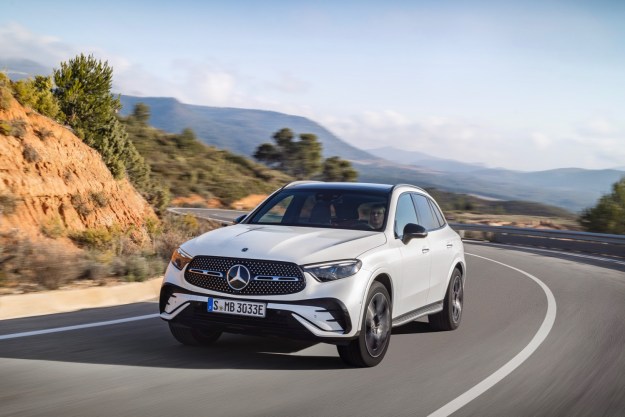Closely following the auto industry’s downsizing trend, Mercedes-Benz is adding two new engines to the M-Class lineup for the 2015 model year.
The first new mill is a 3.0-liter twin-turbocharged V6 unit that sends 329 horsepower and 354 pound-feet of torque to all four wheels via a seven-speed automatic transmission. It returns 18 mpg in the city, 22 on the highway and 20 in a combined cycle thanks in part to a standard start/stop system.
The new V6-powered ML400 replaces the V8-equipped ML550. The 550’s 4.7-liter eight-cylinder engine made 402 horsepower but it returned just 14 mpg in the city and 16 mpg on the highway.
Mercedes hopes a long list of standard equipment will help make up for the loss of power. The ML400 reportedly comes standard with leather upholstery, keyless entry, multi-color ambient lighting, a premium sound system and cup holders that are both cooled and heated. Outside, the ML400 features an AMG appearance package consisting of aerodynamic add-ons as well as 19-inch alloy wheels.
RELATED: Cadillac’s upcoming S-Class-fighting flagship.
The second new addition to the M lineup is a 2.1-liter four-cylinder diesel engine fed by two turbochargers. Also found under the hood of the E-Class, the GLK-Class and the Sprinter van, the oil-burner generates 200 horsepower and 369 pound-feet of torque. A start/stop system helps keep fuel economy in check, but Mercedes-Benz has not published official gas mileage figures.
The 2.1-liter-equipped M is christened ML250 BlueTec. It replaces the ML350 BlueTec as the sole diesel-burning ML sold on these shores, and AutoEvolution speculates it will be capable of returning at least 30 mpg on the highway.
The 2015 Mercedes-Benz ML400 will carry a base price of $63,825 when it goes on sale across the nation in the coming weeks. Pricing information for the ML250 BlueTec will be published closer to its on-sale date.
Editors' Recommendations
- Mercedes-Benz EQG: range, price, release date, and more
- Mercedes-Benz EQS SUV vs. BMW i7: Ultra-luxury, head-to-head
- Mercedes-Benz brings ChatGPT voice control to its cars
- Mercedes-Benz EQE SUV first drive review: ’90s look, cutting-edge tech
- 2023 Mercedes-Benz EQE SUV preview: The EV lineup grows again




